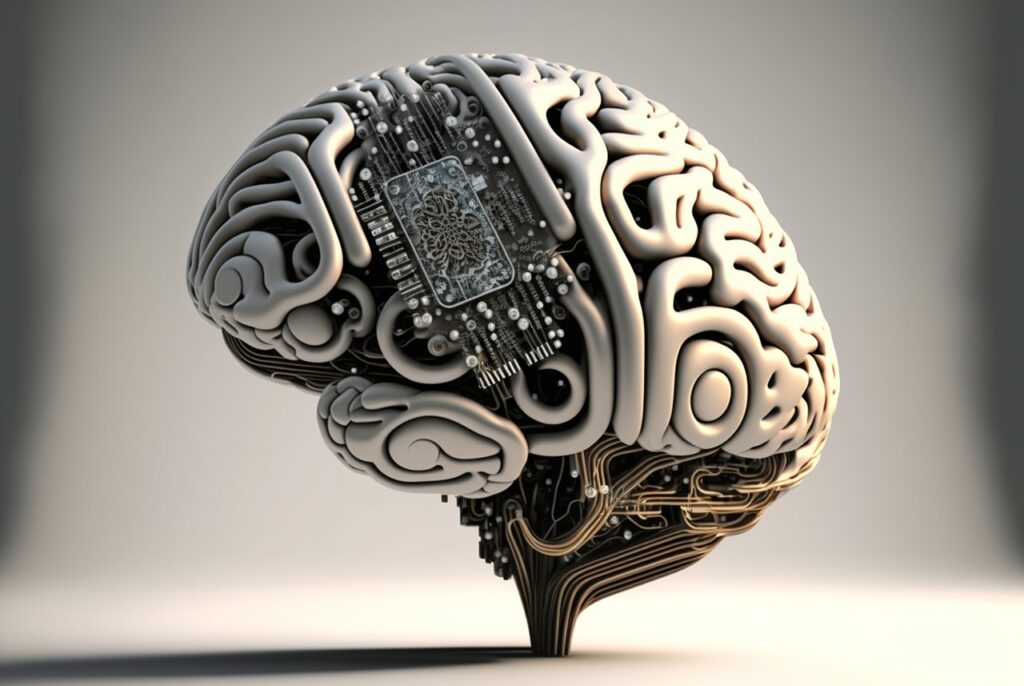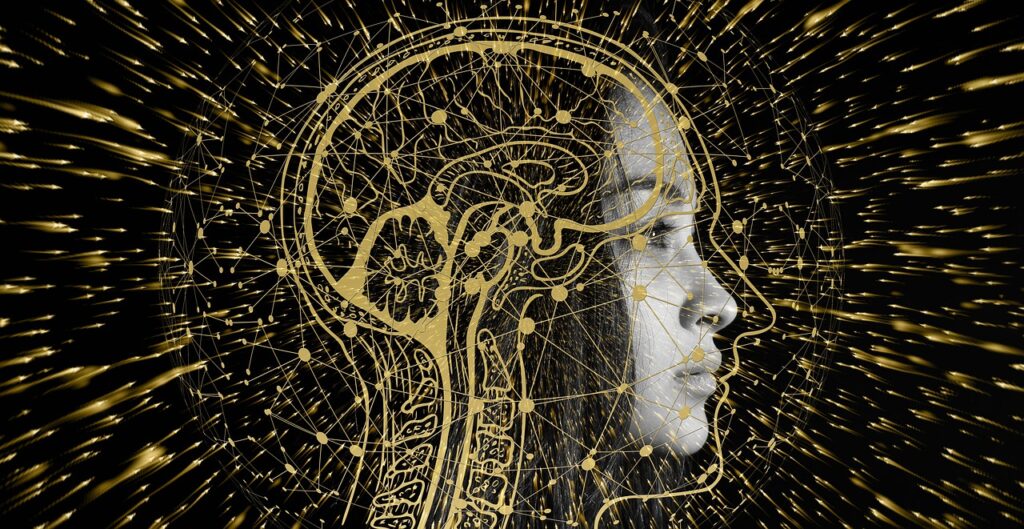
The Future of Neuroscience
Can we upload our memories?
So, back to building a computerised brain. The major issue with looking at human brain cells is that it tends to kill them in the process. The cells need to be stable and unable to move so we can get clear pictures in the laboratory (this is different to brain scans in a hospital that look at the entire brain, rather than just a few tiny neurons). One way around this problem, at least in today’s laboratories, is to use the brains of the recently deceased. Another, more graphic way, is to wait until the moment a person is about to pass away, before preserving the brain. This will eventually be fatal, but the information will be gathered from a living brain, nonetheless. There is a company called Nectome doing just that. Terminally ill volunteers are choosing to have their brains preserved with the intention of storing their brain cells, and therefore their memories, in near perfect condition, essentially freezing their brain in time. Nectome is at the forefront of a brand new field of experimental neuroscience called memory preservation. In 2018, and just hours after death, a human brain was removed and preserved using Nectome’s new technique. This proved the method worked. [1] The brain itself will be used for further studies into perfecting the storage process for others.
To do this new type of preservation, Nectome has developed a chemical solution based on glutaraldehyde to fix the brain and all of its microscopic structures in place for future generations to decode. This is no easy task when considering there are at least 300,000 molecules in each synapse, and we have no real idea as to which ones are functionally relevant in memories or how the cell uses them for long-term memory storage. Neuroscientists can already preserve brain tissue, but the process causes a lot of damage and would be nowhere near the level needed for a human brain to be of any use in the future. This is why Nectome’s novel approach is so exciting.
The company’s ambitious aim is to preserve brains ready for a time when they can be brought back to life in some form or another. However, many scientists believe that reanimating a human brain, even a century from now, is unrealistic. We still have little sense of how the brain is connected. Even if we have this connectome, this brain map will not necessarily be enough to teach us how to extract and decipher the brain’s information. Nectome stress, however, that they are merely focusing on long-term preservation of brain tissue. They are dedicated to preserving the connections, synapses and axons that are the basis (at least as far as we know) for memory storage, and at this stage, they are not attempting to reanimate the brain.
Many questions around the specifics of memory formation remain unresolved and so it is unlikely that personality and behaviour could be identified and uploaded into a future avatar any time soon. Important questions remain frustratingly unanswered. If we think back to Chapter 1, where we explored the process of memory formation, one of the challenges of decoding memories is how small details about each memory are stored all over the brain. Connections to our emotional areas, visual areas, logical areas and so many more can make up a single memory. For example, would a single receptor or ion channel be responsible for remembering an instance when you once laughed at a joke, or for feelings of empathy you once had for a loved one, or cherishing a painting you once saw? Even more intriguing – if we understand these changes could we delete memories that we don’t want? You may want to remember a happy experience at a theme park, for example, but not the part where you throw up after a ride.
What is more plausible is that we will learn to ‘read’ some of the brain’s data at a basic level, such as what decade the memories are from, what language a person spoke or a vague description of a location previously visited. This is more challenging than it sounds because a single memory is not stored as a movie reel or a picture: instead, it consists of a collection of details from neuronal interactions, each with their own subtle changes. Decoding this connectome would require powerful AI to learn not only how the brain cells are connected, but why they are connected. To solve this problem, a wireless headset worn by the person, coupled to advanced AI, could be used for months before the brain undergoes the preservation process. This would be crucial when decoding the connectome to reanimate the brain pathways in a synthetic brain or to ‘restart’ the original organic brain.
Suppose it is possible to retrieve memories from a deceased brain. Depending on how long the brain has been dead, it may be possible to upload our memories post mortem, potentially to solve crimes using the last memories before a murder. Or perhaps we may one day download memories from living people, using a wireless device to see the truth in a criminal trial. Eventually, the consumer market will utilise this technology, and with it, create a future in which we could recall our own memories at will, using a wireless device to identify a happy memory, directions to a location once visited or a simple shopping list.
Future neuroscience investigations and products would almost certainly move in the direction of non-invasive recording. Today, our most reliable data come from electrodes surgically implanted into the brain. Often, studies will recruit people who have electrode implants to treat epileptic seizures to minimise invasive procedures on people who do not need them. Still, we are slowly moving to a future that could detect brain changes wirelessly, as we will see below.

Same head, new body
If we want to preserve our brain, can’t we just cut out the middle-man, quite literally? Why bother going through all the effort of uploading and decoding our brain when we die, when we could just transplant our head onto another, healthy body.
**Pause for the reader to throw up.**
In 1908, a scientist named Charles Guthrie attempted to put the head of one dog onto the neck of another. It didn’t live more than a few hours. Fast forward to 1971, however, and a team of surgeons carried out a gruesome transplantation of a monkey’s head onto another monkey’s body. The monkey survived for 8 days and the surgeons actually managed to restore some basic sensations such as smell, taste and hearing. [2] Of course, this is the stuff of nightmares and a reminder of the sacrifices that are, sadly, made in the name of science. Then, in 2019, a 33-year-old Russian man named Valery Spiridonov, suffering from a muscle wasting disease, was set to become the first human to undergo a full head transplant onto another’s body. In the years leading up to the potential surgery, he had joined up with Italian neurosurgeon Sergio Canavero to perform the world’s first human head transplant. Spiridonov recently removed himself as a volunteer for the surgery, however, after marrying his partner and deciding against the risky procedure. Science is clearly determined to prove the feasibility of this type of surgery, as Canavero is committed to finding another volunteer in the future.
Aside from the ethical considerations of this kind of operation (Canavero has difficulties in performing his research in many countries for this reason), the technical capabilities needed to achieve it are far beyond our reach today. Understanding how to reattach a spinal cord and its neurons, or preserve blood flow to the body and brain, or how to combine many surgical skills for the neck, blood vessels, nerves and everything else, are all challenges that most do not believe we are capable of solving any time soon.

Brain–computer interfaces
One of the most thrilling ideas to come from blending neuroscience and engineering together is one that will have the greatest influence on how we live our lives in the future. Called brain–computer interfaces, or BCIs, they create a direct communication between the human brain and a computer. Simply by using the power of our thoughts, we can interact with the world around us in a completely new way. In fact, research of this type has been continually improving since the 1970s, and now we are finally starting to see the benefit from this technology and where its potential may be. This area is growing at such a rapid rate that the BCI consumer market is expected to be worth $4 billion by 2027.
Virtual reality is already with us, and anyone who owns a games console has likely seen the equipment advertised somewhere. They range from a small headset with a smartphone inserted, to a fully immersive racing car game where every angle you view provides you with a realistic feeling of driving outside. Now, Neurable, a company in Boston, USA, has moved us one step closer to the ultimate experience by showcasing its virtual reality game, called Awakening. What is different about this game is that the movement through this virtual reality is controlled with your mind. Other companies such as Nextmind also want to pair cutting-edge neuroscience with new technology to create products like this for the public. It has developed a headset that analyses a person’s eye movement and translates it into a command. For instance, if the headset is worn while watching TV it can change the channel, increase the volume and open up menu screens. It is available for public purchase today, but this is only the first step in BCI development.
Several companies, such as Brainco, Neurosity, Paradromics and Neurable, are figuring out ways to better record and monitor electrodes in the brain. Currently, the most precise measurements from our brain come from surgically implanted electrodes that burrow into the brain itself. Of course, this will not be great for use in the general public, and today this method is reserved only for people with severe brain disorders that cannot be treated in other ways. Electrodes can be as small as a human hair in an attempt to minimise damage to the brain itself. Wireless EEG devices are in development and will be the direction this technology follows in the future, eventually miniaturising to a size unnoticeable by those around you. Several BCIs that utilise standard EEG measurements are currently on the market, advertised as helping with meditation, attention levels, sleep and emotional states. For recording brain signals, the middle ground between high sensitivity recording with electrodes or non-invasive techniques with low sensitivity is being studied by a company called Synchron. In 2020 it successfully inserted electrodes through the jugular vein in the neck, enabling two patients with motor neuron disease, who were incapable of moving, to communicate via text message. [3] It involved AI software spending weeks learning their brain signals before picking out selected words only by the person thinking them. This is important because it suggests that greater detection of brain signals can be accomplished without having to insert electrodes into the brain, and although this may only find potential in medical circumstances, rather than consumer products, future studies are already looking to improve electrode recording devices. Any electrode will always cause brain cell damage, and although the initial surgery for implantation is relatively safe, we do not understand the long-term damage caused by implanted electrodes. Newer recording devices that can measure brain signals perfectly without causing cell damage would overcome that.
Why not continue reading with the book?
A Million Things To Ask A Neuroscientist – the brain made easy (Mike Tranter)
References
1. White, et al (1971). Primate cephalic transplantation: neurogenic separation, vascular association. Transpl Proc; 3.
2. Oxley, et al. (2020). Motor neuroprosthesis implanted with neurointerventional surgery improves capacity for activities of daily living tasks in severe paralysis: first in-human experience. J Neurointervent Surg.
3. Kangassalo, et al. (2020). Neuroadaptive modelling for generating images matching perceptual categories. Scientific Reports; 10.